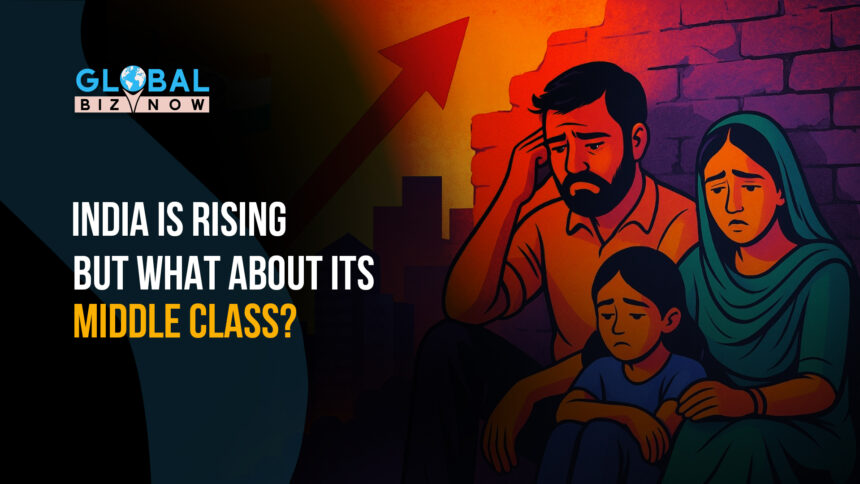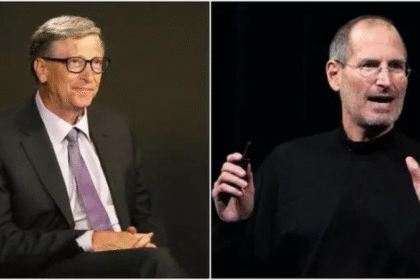In 2024, India hit a big milestone — we became the world’s 4th largest economy, overtaking Japan.
Headlines were full of praise. GDP numbers looked great. The world took notice.
But behind the big numbers and breaking news, there’s a quieter truth —
India’s middle class is struggling. And shrinking.
The Big Growth — And the Big Gap
India’s economy is now worth $3.9 trillion, says the IMF (April 2025). That’s a massive jump from just $476 billion in 2001.
So yes, India is growing fast.
But here’s the problem: while the country is getting richer, most Indians don’t feel richer. Especially the middle class.
What Happened to the Middle Class?
During the COVID-19 pandemic, 32 million Indians fell out of the middle-income group (people earning around ₹750–₹1,500 per day), says Pew Research.
That’s like half of Tamil Nadu’s population sliding out of the economic middle.
Even before COVID, things weren’t great. Between 2011 and 2021, the middle class actually shrank, while the number of people earning less grew.
In a country where 55% of GDP comes from people buying things, this isn’t just a personal problem — it’s a national risk.
So Who Is Getting Rich?
India created 160 new billionaires between 2020 and 2024, according to Oxfam India.
The top 1% of Indians now own more than 40% of the country’s wealth.
Here’s one way to picture that:
If 100 people shared India’s wealth, the richest one person would own more than the bottom 60 people combined.
That’s not just inequality. That’s economic imbalance.
Big GDP, Small Wallet?
GDP is just a number. It shows how much money a country makes — but not who gets that money.
Let’s say a billionaire builds a ₹25,000 crore factory. Great — GDP rises.
But if your petrol price goes from ₹85 to ₹120, GDP doesn’t help you.
Big tech companies are booming. But in cities like Bengaluru or Gurugram, workers are paying ₹35,000 rent to live in slums — often without job security.
The Middle Class Is Under Pressure
Let’s break it down with some numbers:
- Household income has grown by about 4% a year since 2016
- But expenses (food, fuel, rent, education) grew by over 7% every year
- School fees in big cities have gone up by 80% in 10 years
- 1 in 4 families has stopped or skipped health insurance
- Over 55% of middle-class salaried workers spend more than 40% of their income just on EMIs
Why This Is a Big Deal
India’s middle class drives the economy:
- 60–70% of car sales
- 90% of air travel
- Almost all private school spending
If the middle class stops spending, the dream of making India a $5 trillion economy will remain just that — a dream.
Even worse, if young people stop believing that hard work leads to a better life, it could cause frustration — not just economically, but socially and politically too.
What Can Be Done?
Here are a few ideas that could help:
- Support the Middle Class
Give tax relief, better insurance options, and cheaper public transport. - More Jobs, Not Just in Tech
Build jobs in manufacturing, logistics, and services, not just coding and startups. - Raise Wages
Teach new skills — yes. But also ensure minimum wages and protect gig workers. - Improve Public Services
Invest in government schools, hospitals, and local clinics — like Tamil Nadu’s urban health centres.
Final Thought: Who’s Really Rising?
India is clearly rising.
But if your salary is stuck, your rent has doubled, and your savings are gone — does that rise feel real?
The real story of India isn’t just about billionaires and unicorns.
It’s also about common people who dream big, work hard, and yet feel stuck.
Yes, GDP has a new number.
But here’s the question we need to ask:
In the race to become a $5 trillion economy…
Are we leaving the middle class behind? GBN


















